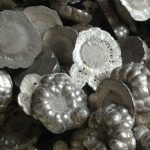Notice: Undefined index: sith_hide_share in /www/sites/alloy.wiki/index/wp-content/themes/likegoogle/single.php on line 32
Deprecated: get_settings is deprecated since version 2.1.0! Use get_option() instead. in /www/sites/alloy.wiki/index/wp-includes/functions.php on line 4862
There are many straightening methods for metals, and most of them are currently mechanical straightening. Commonly used methods are pressure straightening, roll straightening and tension straightening, which is also a common straightening method for titanium plate.

The process of correcting the shape defects of the product after titanium plastic working is called straightening. Titanium and titanium alloy workpieces in the process of heating, forming, heat treatment, etc., due to uneven temperature distribution and plastic deformation distribution and shearing, transportation and stacking, etc., often have different degrees of bending, wave shape, twist and other defects The shape of the workpiece must be corrected by shaping and the residual stress inside it must be eliminated. The longitudinal and transverse bending of the web strip can be straightened by a roller straightener. However, the straightening effect of roller straightening on defects such as middle and edge waves (ie, three-dimensional defects) is not satisfactory. Such defects are related to residual stresses caused by unevenness in the width direction of the strip in the strip during rolling. When the residual stress exceeds the yield limit of the material, secondary deformation occurs, forming a wave shape. If the middle extension is large and the two sides are small, a middle wave shape is formed. If the residual stress does not exceed the yield limit of the material, although no macro defects are produced, the potential residual stress will affect the performance of the strip. It is mainly used for straightening thin plates and thin-walled pipes with thickness less than 0.6mm and thin plates and special-shaped pieces with severe wave or buckling.
Because of the strength of titanium and titanium alloys, the modulus of elasticity is small and the rebound is large. Compared with ordinary metals, straightening and shaping is difficult. Therefore, hot straightening processes are commonly used for medium and large section workpieces. Sometimes some workpieces have a large degree of curvature and require two straightening joint treatments or two straightenings. For example, in the case of a titanium plate, it is operated on a plate-clamp straightening machine.
Its operational points are:
1,Preparation
It should first straighten the titanium plate that needs to be straightened on a roller straightener, or it can be slightly rolled on the milk machine with a small reduction to make the titanium plate flat. In particular, it is advantageous to eliminate the lateral buckling of the sheet. Finish and clean the straightener. The titanium plate is assembled on the clamp of the machine and the jaws are held to a certain margin.
2,Operation
During operation, the titanium plates should be parallel at the front ends of the straightening machine, and the four corners should be 90°. When clamping the titanium plate, align the center line and do not allow skew. When longitudinal waves are generated after operation, the structure of the holder of the straightener must be adjusted to avoid wave formation. Clamp straightening is a gap operation. It is a straightening of a titanium plate before straightening the second one. During the operation, it is checked while straightening, and each titanium plate is qualified before stopping the unloading.
3,Stop
It must be cleaned and cleaned after shutdown, and the holder should be kept free of titanium chips and dirt. Each piece of straightened titanium is re-examined and targeted for disposal to become a qualified product.
Guest contributors are welcome at the Alloy Wiki.It is a weekly wiki and guide on alloy information and processing technology, while also about the vast array of opportunities that are present in manufacturing. Our team of writers consists of a Machining Material Supplier / Machinist / Tool and Die Maker, a Biomedical Engineer / Product Development Engineer, a Job Development Coordinator / Adjunct Professor, and a President and CEO of a manufacturing facility.
Link to this article:Titanium plate and titanium alloy plate straightening method
Reprint Statement: If there are no special instructions, all articles on this site are original. Please indicate the source for reprinting:Alloy Wiki,thanks!^^


